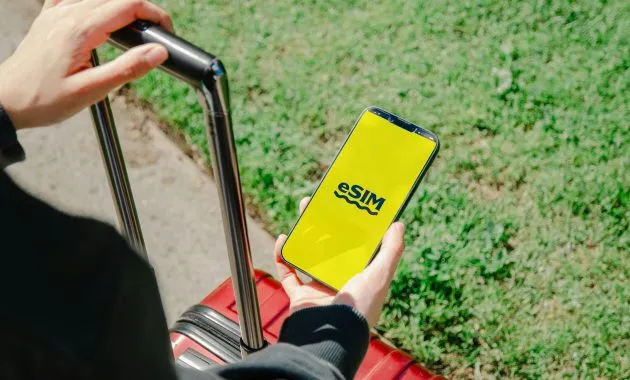Multymeter.com – Technology: eSIM (embedded SIM) is a digital SIM card embedded directly into a mobile device, such as a smartphone, smartwatch, or tablet. This technology offers several advantages and disadvantages compared to traditional physical SIM cards.
Advantages of eSIM:
• Practical and Flexible:
○ Users do not need to bother replacing physical SIM cards when they want to switch operators or use a different number. ○Activation of a new operator can be done easily by scanning a QR code or manual settings.
○ eSIM allows for more flexible dual SIM usage. Users can have two active numbers in one device, for example for personal and business purposes.
○ Very useful for travelers, because it makes it very easy to change cellular operators when in another country.
• More Space:
○ Without a physical SIM card slot, smartphone manufacturers can create slimmer and thinner device designs. The available space can also be used for other components, such as a larger battery.
• Environmentally Friendly:
○ eSIM reduces the use of plastic on physical SIM cards, making it more environmentally friendly.
• Data Security:
○ Mobile operators can improve the security of eSIM user data through stronger encryption.
Data is stored in the cloud, so if users change phones, they can immediately download the data without losing anything.
Disadvantages of eSIM:
• Limited Support:
○ Not all mobile operators and devices support eSIM technology. The availability of eSIM services is still limited in some regions.
• Complicated Transfer Process:
○ Moving an eSIM from one device to another requires a reactivation process, which may be more complicated than moving a physical SIM card.
• Dependence on Technology:
○ eSIM is highly dependent on technology. If there is a problem with the device or network, users may have difficulty accessing cellular services.
• Vulnerable to Tracking:
○ eSIMs that are embedded directly in the smartphone engine can be more easily tracked, unlike physical SIM cards that can be removed.
• Requires activation time:
○ Smartphones that use e-SIMs cannot be operated immediately. Users need about 15 minutes after the scanning process.
Although there are still some shortcomings, eSIM technology continues to develop and offers a lot of potential in the future.
Here are some examples of smartphones from various brands that already support eSIM technology:
1.Apple:
• iPhone 11 series and newer models (iPhone 12, 13, 14, 15, and Pro/Max series)
• iPhone SE (second and third generation)
2.Samsung:
• Galaxy S20 series and newer models (S21, S22, S23, S24, and Ultra/Plus series)
• Galaxy Z Flip and Z Fold series
• Galaxy Note 20 series
3. Google Pixel:
• Pixel 3 series and newer models (Pixel 4, 5, 6, 7, 8, and Pro/XL series)
4. Oppo:
• Oppo Find X series
• Oppo Reno series.
5. Xiaomi:
• Xiaomi 12T Pro, 13, 13 Lite, 13 Pro, 13T Pro, 14 Pro.
• Redmi Note 11 Pro.
6. Huawei:
• Huawei P40, P40 Pro, and Mate P40 Pro.
7. Motorola:
• Motorola Razr.
• Motorola Edge.
8.Vivo:
• Vivo X90 Pro, X100 Pro.
It is important to note that eSIM availability may vary by region and carrier. Always check device specifications and carrier compatibility before purchasing.***

